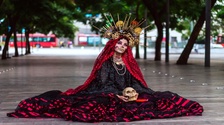搜尋自 英語 {1} 教師……
ALi Asghar
两样衣服。
两种衣服。
what is the difference between two sentences?
2025年1月27日 17:42
解答 · 2
两种衣服 and 两样衣服 both describe two types of clothing, but they have subtle differences in usage and emphasis:
1. 两种衣服 (liǎng zhǒng yīfú)
• “种” (zhǒng) means “kind” or “category,” so this phrase emphasizes that the two pieces of clothing belong to different categories or styles.
• Example:
• 我买了两种衣服,一种是休闲装,一种是正装。
(I bought two types of clothes: one is casual wear, and the other is formal wear.)
2. 两样衣服 (liǎng yàng yīfú)
• “样” (yàng) means “appearance” or “style,” so this phrase emphasizes that the two pieces of clothing are different in look, style, or design rather than their category.
• Example:
• 我带了两样衣服,一样是红色的衬衫,一样是蓝色的外套。
(I brought two different pieces of clothing: one is a red shirt, and the other is a blue jacket.)
Summary:
• 两种衣服 → Different categories of clothing (e.g., casual vs. formal).
• 两样衣服 → Different individual pieces of clothing (e.g., a red shirt vs. a blue jacket).
2025年1月31日 17:32
It is definitely similar meaning.
2025年1月29日 06:30
還沒找到你要的答案嗎?
寫下你的問題,讓母語者來幫助你!



